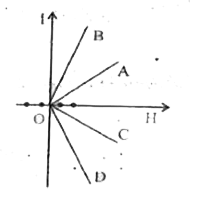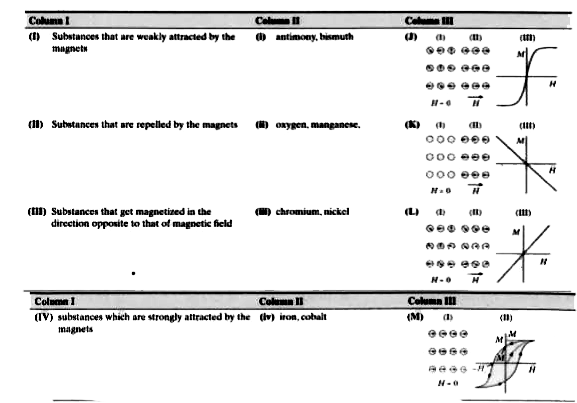Show diagrammatically the behaviour of magnetic field lines in the presence of :
(i) Paramagnetic and
(ii) Diamagnetic substance, How does one explain this distinguishing feature ?
Diamagnetic substances are those which have tendency to move from stronger to the weaker part of the external magnetic field. Electrons in an atom orbiting around nucleus possess orbital angular momentum. These electrons are equivalent to current carrying loop and thus possess orbital magnetic moment.Diamagnetic substance are ones in which resultant magnetic moment in an atom is zero.
(i)Deduce an expression for the frequency of revolution of a charged particle in a magnetic field and show that it is independent of velocity or energy of the particle.
(ii)Draw a schematic sketch of a cyclotron.Explain giving the essential details of its construction how it is used to accelerate the charged particles.

Topper's Solved these Questions
- BOOK - RESONANCECHAPTER - ELECTRODYNAMICSEXERCISE - Advanced level problems31videos
ELECTRODYNAMICS
- BOOK - RESONANCECHAPTER - ELECTRODYNAMICSEXERCISE - Exercise-3 PART-227videos
ELECTRODYNAMICS
- BOOK - RESONANCECHAPTER - ELECTRO MAGNETIC WAVESEXERCISE - Exercise 327videos
ELECTRO MAGNETIC WAVES
- BOOK - RESONANCECHAPTER - ELECTROMAGNETIC INDUCTIONEXERCISE - A.l.P19videos
ELECTROMAGNETIC INDUCTION
Similar Questions
Knowledge Check
- Question 1 - Select One
The variation of the intensity of magnetization (I) with respect to the magnetizing field (H) in a diamagnetic substance is described by the .
 AODBOCCOBDOA
AODBOCCOBDOA - Question 2 - Select One
We know that magnetic substances follow curie- weiss Law. In the given table, Column I shows the type of attraction with magnets of magnetic substances, Column II shows the example of magnetic substances and Column III shows the three figures- figure (I) shows direction of magnetic momentum of each electron when there is no magnetic field inside magnetic substance, figure (II) shows the direction of magnetic momentum of electron when there is magnetic field inside magnetic substance and figure (III) shows the curve between M and H inside magnetic substance.

Which combination is characteristic of diamagnetic materials ?A(III)(i)(L)B(I)(i)(J)C(III)(iii)(J)D(II)(i)(K)
Depict the behaviour of magnetic field lines when (i) diamagnetic and (ii) a paramagnetic material is placed in an external magnetic field. Mention briefly the properties of these materials which explain this distinguishing behaviour.
View SolutionExplain with one example each, the diamagnetic, paramagnetic and ferromagnetic substances
View SolutionWhat is a solenoid ? Draw the pattern of magnetic field lines of (i) a current carrying solenoid and (ii) a bar magnet. List two distinguishing features between the two fields.
View SolutionWhat is a solenoid ? Draw the pattern of magnetic field lines of (i) a current-carrying solenoid, and (ii) a bar magnet. List two distinguishing features between the two fields.
View SolutionWhat is a solenoid? Draw the pattern of magnetic field lines of (i) a current carrying
solenoid and (ii) a bor magnet. List two distinguishing features between the two fields.View SolutionIn what way is the behaviour of a diamagnetic material different from that of a paramagnetic material, when kept in an external magnetic field?
View Solution

